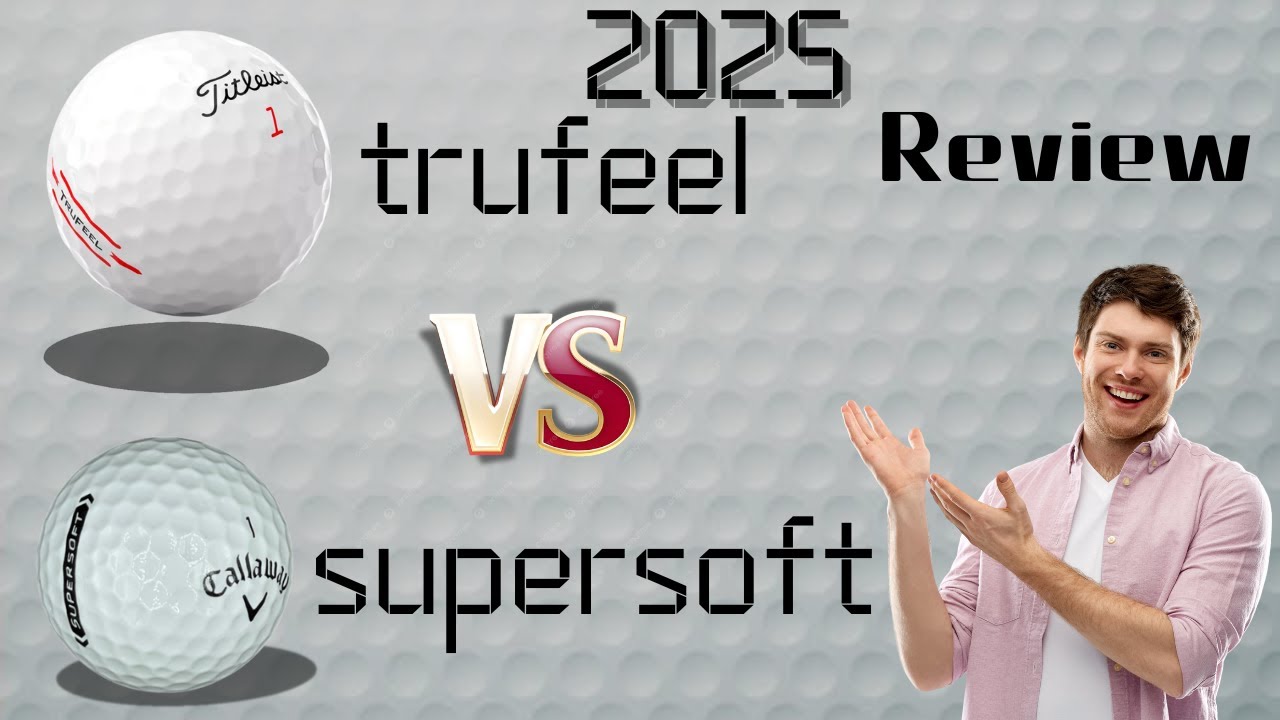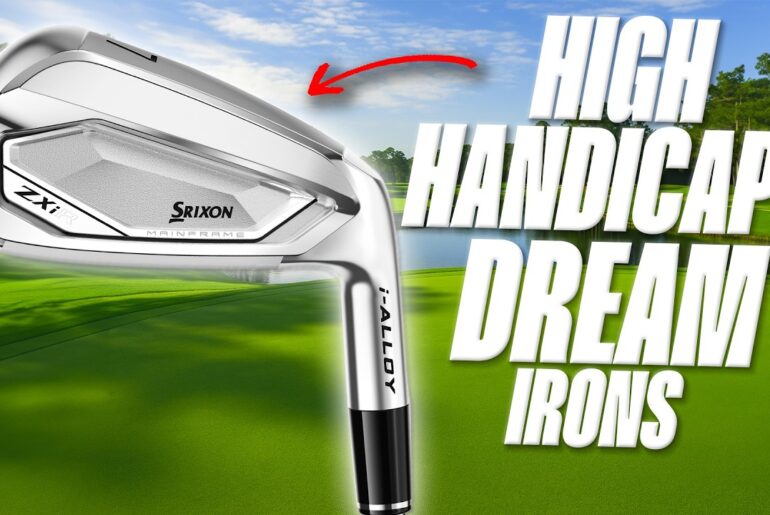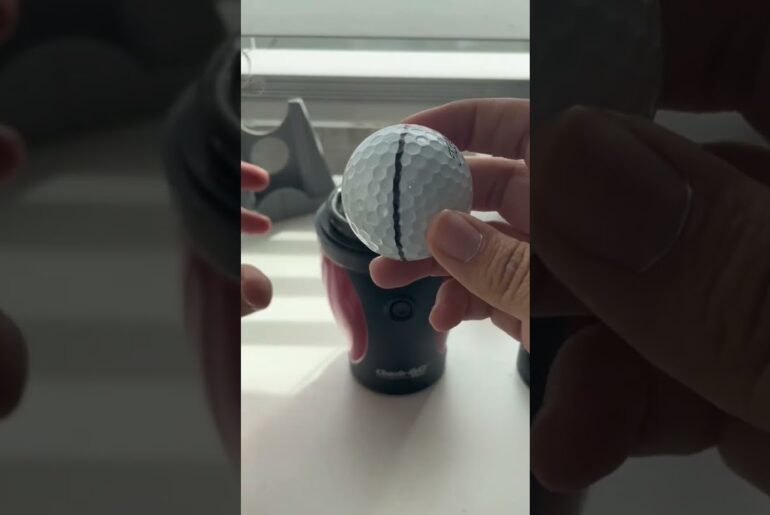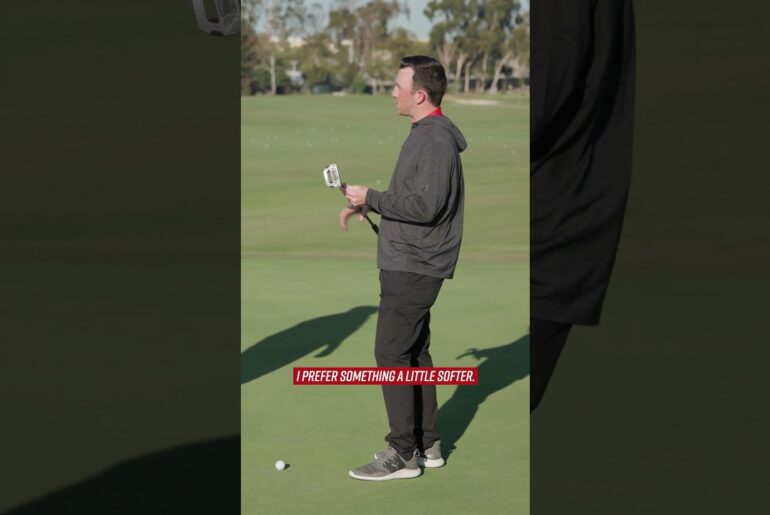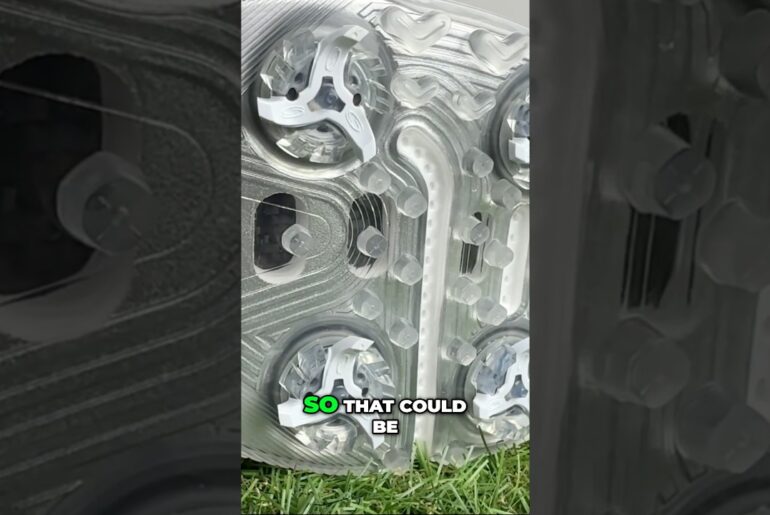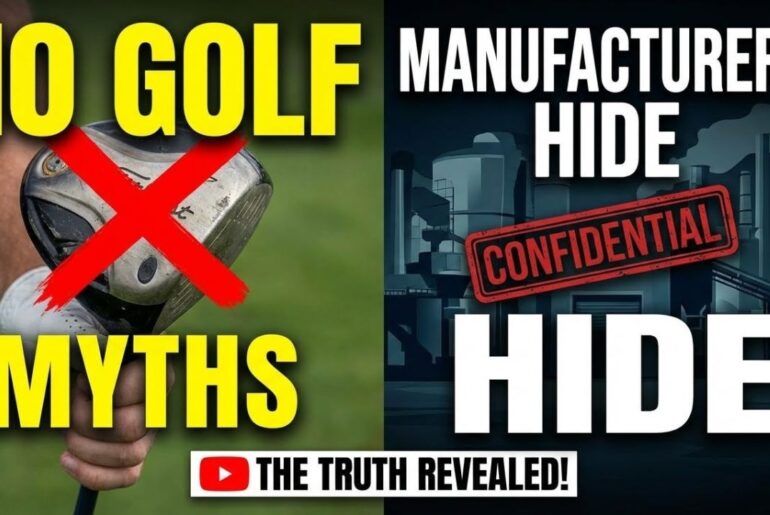Titleist TruFeel Golf Ball vs Callaway Supersoft | Review and Comparison
▬▬▬ 👇 Buy Links 👇 ▬▬▬
✅ Titleist TruFeel Golf Balls 2025
► Amazon US: [https://amzn.to/4mQQKf5]
✅ Callaway Supersoft Golf Balls 2025
► Amazon US: [https://amzn.to/3IT1Gea]
In this 2025 golf ball comparison, we put the Titleist TruFeel against the Callaway Supersoft, two of the most popular soft-feel golf balls on the market. If you want exceptional feel, straight flight, and great value, this head-to-head review will help you find the perfect golf ball for your game.
We Compare:
🏌️ Distance & Launch – Which ball gives longer carry and higher launch.
🎯 Spin & Control – Greenside performance and wedge spin comparison.
🧲 Feel & Feedback – TruFeel’s classic soft feel vs Supersoft’s ultra-low compression.
💎 Construction & Durability – 2-piece design, ionomer cover, and aerodynamics.
💰 Value for Money – Which soft golf ball delivers the best all-around performance.
👤 Best For – Beginners, mid-handicap golfers, and players seeking soft feel with distance.
Whether you prefer the consistent performance of Titleist TruFeel or the ultra-soft touch of Callaway Supersoft, this 2025 comparison will help you choose the right ball for your game.
🔔 Don’t forget to Like, Subscribe, and Tap the Bell Icon for more golf ball reviews, comparisons, and performance tests!
Affiliate Disclaimer
As an Amazon Associate, I earn from qualifying purchases.
Copyright Notice
Some footage may not be original. For removal requests, contact: akmmanik87@gmail.com
Content Disclaimer
This video is created for educational & promotional purposes under fair use.
Today we’ve got a head-to-head battle between two of the most popular budget friendly golf balls out there. The Titleist True Field Golf Ball versus Callaway Super Soft. Review and comparison. Both are designed to give you a soft feel, great distance, and plenty of forgiveness without breaking the bank. So, by the end, you’ll know exactly which ball deserves a spot in your bag. First up, we have the Titleless True Feel Golf Ball. The Titus True Field sits in an interesting spot in the Titus lineup. While the Prov1 and AVX are their premium tour level balls, the True Feel is designed for golfers who want soft feel, solid control, and dependable quality, but at a lower price point. Titalist markets it as their softest feeling ball. Built for players with moderate swing speeds, higher handicaps, or anyone who doesn’t want to spend $50 to $60 a dozen on tour balls. It’s consistently rated as one of the best value options Titus offers. A ball that delivers plenty of titleless quality without breaking the bank. So, what’s inside the True Feel? Let’s break it down. Core. It uses the True Touch core, a low compression design that helps generate distance while keeping spin down on long shots. Cover. The True Flex cover. Thin, soft, and flexible. gives you that signature soft feel and helps with control in the short game. Dimples. Title engineered a 376 tetrahedral dimple pattern for stable flight and decent trajectory. In short, this is a two-piece construction ball. Soft core, soft cover, optimized for value and feel, not necessarily raw maximum performance. With the driver, the true feel gives you a respectable distance. It’s not as long as a Prov1 or Velocity, but for moderate swing speeds, it holds up well. In some tests, it’s even a few yards longer than competitors like the Callaway Super Soft when using irons. But for players with very fast swings, you may lose some yards compared to premium urethane balls. Here’s where the trade-off shows up. Around the greens, the True Feel feels nice and soft, but it won’t give you tour level spin. Think more bump and run, less flop shot with tons of bite. For casual players though, the green side control is good enough, and the soft touch on chips and putts feels great. This is really where True Feel shines. Putting and chipping with this ball feels buttery soft. Off the driver, it’s more muted. Some golfers love that, while others prefer a firmer click. But if you like a quieter, softer sensation, this ball absolutely delivers. In terms of ball flight, True Field tends toward a mid to high trajectory. It’s stable in calm conditions, but can balloon a little in the wind. Dispersion is decent. You won’t see wild inconsistencies, but again, it’s not built for prolevel precision. As with most softer cover balls, durability isn’t its strongest feature. After a couple of solid rounds, you may start to see scuffs and wear marks. The good news is Titalist’s build quality and consistency are still excellent. And because it’s a value ball, replacing it more often doesn’t sting as much as losing a Prov1. Here’s the big selling point. True Feel comes in at roughly half the price of Prov1’s. You’re getting the titleless name, the quality control, the soft feel, but at a very walletfriendly cost. For many golfers, that makes this ball a no-brainer everyday option. Titleless True Feel Golf Ball. Pros and cons. Pros: Super Feel, especially on the greens. Easy to compress for moderate swing speeds. Affordable titleless quality. Good alignment and color options. Cons: Less distance than premium balls for faster swingers. Limited short game spin compared to urethane covers. Ball flight can balloon in the wind. Next, let’s talk about the Callaway Superoft. The Callaway SuperSoft is a two-piece golf ball designed for mid to high handicap players and especially for golfers with moderate swing speeds. Over the years, Callaway has fine-tuned this ball to deliver softer feel, better distance, and more forgiveness while keeping the price accessible. The 2025 version continues with the same mission. Higher ball speed, low spin, improved durability, and that signature soft feel from Tabin. Now, let’s get into the performance in tech because that’s where this ball stands out. At the heart of the Super Soft is an ultra low compression core. What does that mean? It means golfers with average or slower swing speeds can still generate good ball speed and distance. The low compression gives the ball more give, so even offc center hits feel softer and travel further. The cover uses a hybrid design with something called a paraloid impact modifier. That’s Callaway’s fancy way of saying the ball resists scuffs and cuts while still staying soft. The Super Soft also features Callaway’s signature hex dimple pattern. Instead of traditional round dimples, these hexagonal ones reduce drag, help lift the ball, and keep flight straighter and more stable, especially in breezy conditions. Off the driver and long irons, you’re going to see high launch with relatively low spin. That’s the recipe for more distance. Around the greens, you’ll still get decent spin and control for a two-piece ball. Not at the level of a $50 tour ball, but surprisingly solid for the price. One thing golfers love about the Super Soft is how soft it feels. Offcenter hits don’t sting as much, and it tends to fly straighter. It doesn’t exaggerate size spin as much as some other balls. So, for players looking to hit more fairways, that’s a nice bonus. In terms of build quality, Callaway nails it here. The materials feel premium for the price point. The dimples are uniform, the finish is smooth, and you rarely see inconsistencies. And let’s be real, feel is why most people buy the Super Soft. It is incredibly soft whether you’re hitting the driver, wedge, or putter. The sound is muted, no harsh click, and that soft feedback builds confidence, especially around the greens. Many players describe it as the softest ball they’ve ever hit, and that’s a huge reason for its popularity. So, what about durability? The Paraloy Hybrid cover definitely improved things compared to older models. The Super Soft resists scuffs pretty well, though. If you catch a bunker shot or a cart path, you’ll still see some marks. Maintenance is simple, clean with mild soap and water after rounds with a moderate swing speed. It’s forgiving, easy to hit, and doesn’t require tour level precision to see good results. On the flip side, if you swing really fast or demand maximum green size spin and shot shaping, you might want to look at a premium urethane ball instead. The Super Soft is a fantastic value. Typically, you can pick up a dozen for under $25, which is way less than the $45 to $55 Tour Balls. And let’s not forget, it comes in multiple colors, white, yellow, orange, pink, green, and even some special edition designs that makes it easier to track your ball or just show a little personality on the course. Callaway Super Soft pros and cons. Pros: Superoft feel on every shot, great distance for moderate swing speeds, forgiving and easy to hit straight. Hex dimples improve flight stability. Cons: Not as much green size spin as premium tour balls. Softer cover can still scuff with heavy use. Not ideal for players with very high swing speeds. Titleist True Field Golf Ball versus Callaway Super Soft. Review and comparison differences. Spin, especially long game versus green side. Lower long game spin, which helps distance and minimizes ballooning. However, around the greens, the softer cover gives decent spin or control for its class. Some reviews caution that it does not approach the spin of premium tour balls. Callaway Super Soft also tends to be a lower spin ball in the full swing, which helps with distance. But with newer cover tech, Callaway has tried to improve its short game or wedge responsiveness. Who is each good for? Target user or ideal player? Title is true feel. golfers with moderate to slower swing speeds, especially below about 95 miles per hour with driver who want a soft, forgiving feel. Higher handicap or mid- handicap players who value feel and control over extreme spin or tour level performance. Players looking for a titleless branded ball at a lower cost than prova super soft. Mid to high handicap players who want a forgiving soft field ball with respectable performance. Players whose swing speeds are moderate, not ultra high, who benefit from a ball that encourages higher launch and lower spin to maximize distance. Those who want a balance of distance, feel, and durability, especially with its improved cover tech. [Music]

